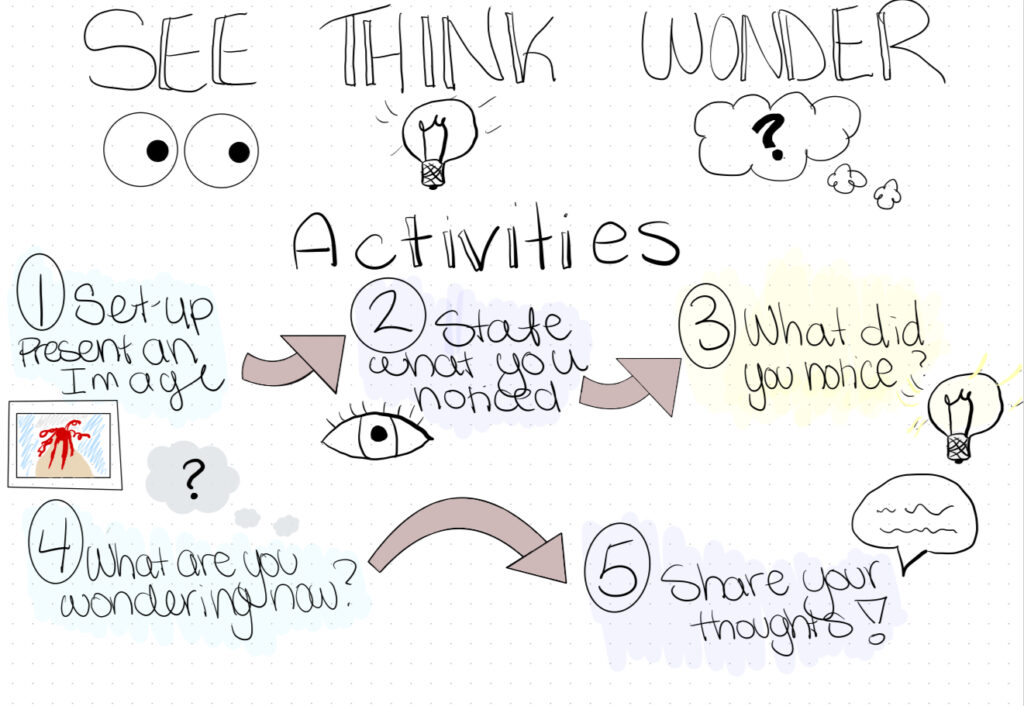Posts in Category: Weekly Reflection
Week 8 Reflection
Basic Coding
I had such a great time learning simple coding by playing the flappy bird game. I have very little experience with coding so this was a fun and accessible learning activity that I can do and also use with my students. I think that kids would have a great time doing this and feel accomplished as they have a final product to play with and a cute certificate that I could print for them to take home.

Computational Thinking
This week we also discussed computational thinking and I believe it can help learners become better problem solvers. Computational thinking involves breaking down complex problems into smaller, more manageable parts, identifying patterns and relationships, developing algorithms to solve problems, and testing and refining solutions. By learning to think computationally, my students can develop skills such as problem-solving, critical thinking, logical reasoning, and creativity. These skills are essential for solving complex problems in various fields, including science, engineering, mathematics, and computer science.
Computational thinking can also help learners develop a systematic approach to problem-solving. They learn to find and analyze problems, break them down into smaller, more manageable parts, and develop step-by-step solutions. I believe it also improves their creative thinking skills so they can be more adaptable in life. As we have discussed before, we are in an age of information, therefore, teachers need to help mold students into critical thinkers that can discern information accurately and think creatively with the knowledge they can access.
Week 7 Reflection
This week we talked about online citizenship. To be very honest, Jesse Miller pleasantly surprised me with his presentation on this topic. My stance on technology and social media has always been wary… I worry about the negative consequences of it. When I talk to my partner about it I always say I want to limit our child’s screen time and be conscious about it as a family (when we have one- we don’t have children yet). However, I feel like Jesse expanded my thinking and challenged some of my preconceived ideas. For one, we cant fight technological progressions… it is here and it is happening. So to deny that would be counter productive. I still hold the belief that too much of anything is not good for a person and that the internet and its vastness is not something a child is developmentally prepared to handle with no guidance. Nevertheless, I appreciated his pragmatic stance on the topic.
As a future educator, I know that this will play a massive role in my work. My classes will be filled with children of various backgrounds, with various access and restrictions on their technology use. Therefore, I must be aware of what is happening in this sphere and help nurture its positive use and help my students navigate it. I want them to be able to handle these tools appropriately and effectively as citizens. Moreover, I found it extremely helpful to learn about the laws and expectations around technology as a teacher. There is a lot to keep in mind and also to to understand in order to teach it to my students. I hope to walk into this profession as equipped as I can be and to completely reject technology and social media would not serve me nor my students. Rather, I need to be aware of its strengths and limitations and how to navigate it all as a professional.
Week 5 Reflection
Intentionality in Technology Enabled Learning Design
This week our class focused on intentionally using technology for learning. In class, we discussed two frameworks for evaluating the appropriateness of the educational technologies we can use in our classrooms. The first framework is S.A.M.R (substitution, augmentation, modification, redefinition) and the second is the SECTIONS (students, ease of use, costs, teaching functions {including the affordances of different media}, interaction, organizational issues, networking, security and privacy) model. I found both helpful as they make me extend my thinking and reflect deeper in ways I might not have thought to on my own. I have saved them so that I can refer back to them in the future.


Learning Design Examples

Sketchnote
We practiced sketch-noting this week and although I am not confident in my artistic abilities I do see the value in this tool. I think I would actually use this as a tool to teach my students, rather than something I may learn on in my teaching. For my visual learners I think this could be both fun and helpful for them to use in their careers as students and professionals.

Infographic
The other learning design type we practices was infographics. This is way more up my alley as I prefer not to have to draw (as you can see why above). I used Canva, which is my favourite teaching resources, as they have pre-made templates. The one I made here was already designed and I simply had to fill it in as I desired. I could see me using this as a tool to send handouts to parents, as I hope to teach kindergarten and I am sure there will need to be lots of parent-teacher communication.
Assistive Technology
My Experiences With Assistive Technology

When I worked as an EA on School District 61’s spare board, I was able to observe a variety of classrooms and schools. Each one was unique and had access to different forms of assistive technology. One tool I saw in many of the schools was iPads, which were used in a variety of ways. For example, when I supported a student that had down syndrome, we would use it as a communication tool as they were able to see the images and press them to tell me what they needed. The IPAD was also used for communication with a Ukraine refugee student, as it allowed them to use google translate to talk with me and the teacher.
Unfortunately, I also saw the IPAD used without much thought or intention, as a way to quiet a high-needs behavioural student in a grade one classroom I worked in. This student had a lot of energy and none of that energy was put toward what their teacher wanted. I can empathize with the teacher that managing their busy classroom and this student would be exhausting, nevertheless, I was disappointed that their go-to solution was giving them an iPad so they would sit still. The student was extremely bright and capable of far more than the teacher invested in him. Thus, in this case, I believe assistive technology was used but not in a way that benefited this student.
Looking Back and Looking Ahead
Two forms of digital accessibility practices that often see missed are closed captions in elementary schools and proper colour contrast on university slides. In many elementary classrooms that I’ve been in, I did not see closed captioning on their videos. I recognize that in the lower primary grades, this may not be as helpful, but I still think it can be good practice to use. Moreover, as I am privileged to have no vision issues, I did not think about colour contrast on my website or on any presentation slides that I have made over my work and school career. I will certainly be keeping this in mind going forward.
An Example Using Closed Captioning on Youtube
Screen Casting In The Classroom
This week we worked on screen-casting and making these videos interactive with H5P. I am personally interested in working with kindergarten students, so this may not be that useful for them. I feel like I want to use minimal technology with them during their formative years. However, one benefit I do see could be using this to communicate with parents on how to use an online platform for the school or our classroom. For example, navigating a classroom website or assessment tool.
I have seen screen casting done before with a grade 8 class, where the teacher created screen cast videos demonstrating the math concept they were working on. Students and families were able to access these videos on google classroom and use them to support their studying/homework.
I could see myself doing this with students as early as grade 5. Screen-casting videos that demonstrate how to do their homework and making it interactive for activities such as watching videos can be beneficial. It is helpful to reach families at home so they don’t have to wait and talk to me in person or by email. This eliminates work for both parties and offers support that can be reached as needed. My one obvious worry is that not all families have the capabilities to access these resources and would need to communicate and find out if all families have access to a computer. As always, I believe if used intentionally multi-media resources can benefit those teachers who use them!
The future of Education
This week we watched the documentary, Most Likely to Succeed by Ted Dintersmith. This documentary explored the topic of education in America and challenges the viewers potentially preconceived ideas on how we educate children. As a future educator, this topic is at the forefront of my mind and Ted did a brilliant job of offering new perspectives while allowing me to develop my own opinions. The documentary follows some teachers and students at a school named High Tech High, which takes a innovative approach to educating their students. I felt inspired and excited when I watched and it prompted many thoughts about my future teaching career.
What excites me about the ideas Ted highlights in his documentary are many. First, it was a relief to see teachers, who are excited about their work and feel like they are making a real difference in the lives of their students. Unfortunately, this has not been my experience when I have talked to some teachers or consumed media that highlights the difficulties working within our educational institutions. I once worked as an casual educational assistant in School District 61, which meant I went to a variety of schools within the district. I met, witnessed, and worked alongside a wide variety of teachers that held many different perspectives on their jobs, often negative. On the contrary, teachers at High Tech High had the freedom to teach what they thought would benefit their students most, in any way they saw fit. In turn, they seemed excited, energized and hopeful about their careers and I hope to feel the same.
I believe that this approach at High Tech High impacts the teachers and students in a similar way. At first, you could see how the new students did not know how to act in this alternative setting and had uninspired looks on their faces (a familiar look in many modern schools). However, as the documentary progressed you watched them come to life. Obviously, with some good editing and thoughtful choice of what to include in the film. Nonetheless, I can imagine how much happier my students will be if I take the time to give them autonomy over their learning and opportunities to stretch their comfort zones. Our world is changing an it is unacceptable to not have our educational institutions change with it. Moreover, how can we make these changes align with post-secondary institutions and job entry requirements so our students aren’t stressed? These are important questions to keep discussing for the future of education.
Jenna’s Blog
I bet you’re wondering what this blog is all about?! Well me too. Today is the first day of my blogging journey for EDCI 336. I am excited that you’re here. I have never created a blog before so setting up this site was a bit of a struggle for me. However, I am excited to get going so I can learn how to utilize educational technology to support my professional journey. I will be deciding on an inquiry project to take on this semester and sharing about it over the next few months. I look forward to sharing this journey with you! 🙂